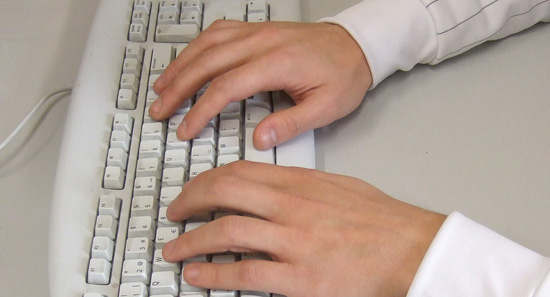1. Different things we write.
Watch the video. Drag the different text types in the order they are mentioned.
Now watch the video again. Turn on and read the subtitles.
2. Vocabulary: Text types.
Here is a list of different things we read and write at work:
form, note, report, proposal, minutes, message, brochure, letter, postcard, notice, memo, instructions
Choose the correct word for each definition.
3. Sample text types.
Look at these short extracts from different types of texts. Which type of text is each one?
Choose the correct option.
4. Tips on writing.
Read these tips (advice). Choose the best meaning or definition for the underlined words.
Then mark the statements true or false, according to the text.
TIPS ON WRITING
Letters
As far as language is concerned, there's no need to use the old-fashioned phrases that used to be
part of business writing. But a business letter is still
formal writing. So there's no place for slang or the language we use when we chat with friends. There should be a logical structure
– going from why you're writing through to the main content
and ending by looking towards what happens next (such as
"I look forward to hearing from you to arrange
an interview").
Forms
These days, lots of forms can be filled in online. If you actually have to write a lot on the
form, for example an application form, you could print off
a copy of the form so you have time to think about it and
decide what you are going to write. If you have to complete
a form by hand, you make life easier for the reader if you use capital letters, especially when you have small handwriting.
Email
Email is a fast, efficient way of communicating. It has become
a much more direct and often less formal way of communicating
than by letter. But there are exceptions. One of these is when
the sender hasn't met the person he or she is writing to, which means that the
more formal conventions of a letter (such as "Dear
Mr Smith", for example) are safer than the jargon and shortcuts we might use with friends (such as "C U" for "See you", and
"4" instead of "for").
Memo
As these are not addressed to any one person in particular,
they do not begin with Dear …, and are usually not signed.
At the top of the page it is stated who the memo is addressed
to and who it is from. Also, after the letters cc: are the
names or initials of people the memo is forwarded to.
They have brief introductions which give the subject of the memo.
7. Watch and answer.
Watch the video and choose the correct answers to the questions below.
Now watch the video again. Turn on and read the subtitles. Take notes on the three things that Jennifer wants Neil to include in the memo. (In the next exercise you will have to write the memo that Neil sends.)
8. Writing Tutorial 1.
- Send an email to your tutor introducing yourself and explaining a little about who you are and what you do.
- Use your notes from exercise 7 to write the memo that Neil sends around to everybody in the office on behalf of Jennifer.
